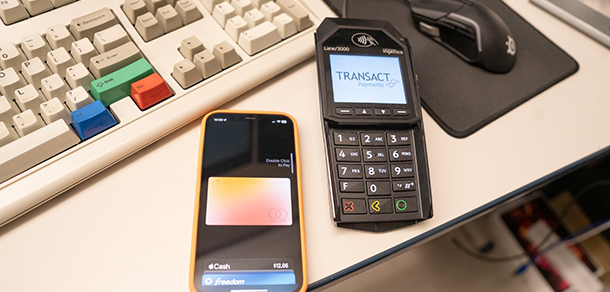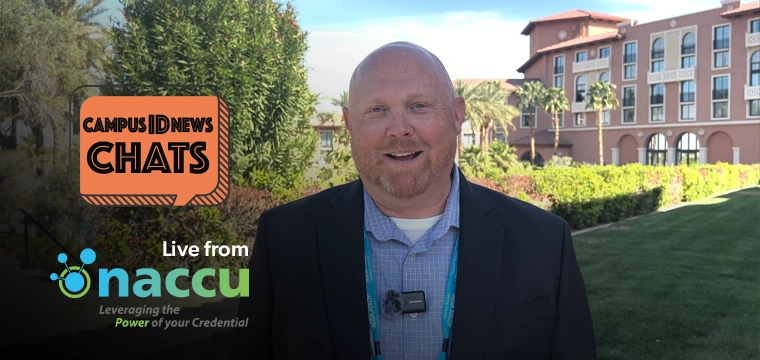
The flexible cost-effective option can fill gaps in a campus payment landscape
The University of the Pacific is using virtual terminals to accept payments from any WiFi-connected device including desktops, laptops, tablets, or mobile phones. Because dedicated hardware like a cash register or point-of-sale terminal are not required, virtual terminals are extremely cost-effective, easy to deploy, and can enable payments at locations previously unserved.
UPacific uses the Transact Virtual Terminal in a variety of creative ways across its Stockton, California campus. It was among the first institutions to implement the product from their longtime transaction system partner Transact.
At a recent fundraising event the virtual terminal processed more than $40,000 in payments from chip cards, contactless cards, iPhones, Watches, and operator-entered card data.
“We process hundreds of payments in person for event donations, registrations, dues, etc.,” says Matt Camino, UOP’s eCommerce Director. “I can carry this with me wherever I go...it gives us more flexibility and security.”
At a recent fundraising event the virtual terminal processed more than $40,000 in payments. Transactions included chip cards, contactless cards, Apple Pay via iPhone, Apple Pay with Watch, and operator-entered card data.
“It was a great experience all around, and there wasn’t a single customer who offered up a payment type that we couldn’t serve,” says Camino.
In the future, the institution plans to roll out the technology to their Continuing Education department, chapel, and pharmacy clinic van. Eventually, it will be used across all three campuses.
If the campus desires, virtual terminals can even be checked to faculty or students who are selling items, processing club dues, or taking event payments.
“We’ll probably have to buy some more desktop versions and up to 10 more mobile handhelds,” adds Camino.
How do virtual terminals Work?
According to Transact, the Transact Virtual Terminal uses point-to-point encryption, tokenization, and fraud prevention tools to deliver secure transactions and meet strict payment processing requirements. By eliminating manual processes and enabling payment acceptance in virtually any location, the technology reduces administrative costs.
It integrates with the institution’s student information system, financial software, and other relevant systems. This can streamline workflows, eliminate manual errors, and provide up-to-date financial data.
The low cost, ease of deployment, and flexibility of a virtual terminal make it an ideal option for a subset of payments. While it does not have the full feature set of a register or point-of-sale system, it can fill the gap for other needs on campus.




